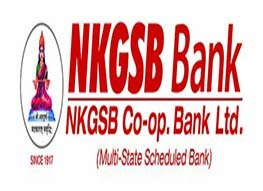Languages used to develop iOS applications
Different languages like Objective C, Swift are available to develop iOS applications
Objective C
Objective C is the primary programming language which is used when writing software for OS X and iOS. It’s a superset of the C programming language and provides object-oriented capabilities and a dynamic runtime. Objective-C inherits the syntax, primitive types, and flow control statements of C and adds syntax for defining classes and methods. It also adds language-level support for object graph management and object literals while providing dynamic typing and binding, deferring many responsibilities until runtime. When building apps for OS X or iOS, most of the time is spent working with objects. Those objects are instances of Objective-C classes, some of which are provided for by Cocoa or Cocoa Touch and some of which can be written by our self.
If own class is written, then description of the class must be provided that details the intended public interface to instances of the class. This interface includes the public properties to encapsulate relevant data, along with a list of methods. Method declarations indicate the messages that an object can receive, and include information about the parameters required whenever the method is called. Class implementation must be provided, which includes the executable code for each method declared in the interface.
Rather than creating an entirely new class to provide minor additional capabilities over an existing class, it’s possible to define a category to add custom behavior to an existing class. One can use a category to add methods to any class, including classes for which one don’t have the original implementation source code, such as framework classes like NSString.
If original source code for a class is available, one can use a class extension to add new properties, or modify the attributes of existing properties. Class extensions are commonly used to hide private behavior for use either within a single source code file, or within the private implementation of a custom framework.
The majority of work in an Objective-C app occurs as a result of objects sending messages to each other. Often, these messages are defined by the methods declared explicitly in a class interface. Sometimes, however, it is useful to be able to define a set of related methods that aren’t tied directly to a specific class.
Objective-C uses protocols to define a group of related methods, such as the methods an object might call on its delegate, which are either optional or required. Any class can indicate that it adopts a protocol, which means that it must also provide implementations for all of the required methods in the protocol.
It’s common in Objective-C to use Cocoa or Cocoa Touch classes to represent values. The NSString class is used for strings of characters, the NSNumber class for different types of numbers such as integer or floating point, and the NSValue class for other values such as C structures. One can also use any of the primitive types defined by the C language, such as int, float or char. Collections are usually represented as instances of one of the collection classes, such as NSArray, NSSet, or NSDictionary, which are each used to collect other Objective-C objects.
Blocks are a language feature introduced to C, Objective-C and C++ to represent a unit of work; they encapsulate a block of code along with captured state, which makes them similar to closures in other programming languages. Blocks are often used to simplify common tasks such as collection enumeration, sorting and testing. They also make it easy to schedule tasks for concurrent or asynchronous execution using technologies like Grand Central Dispatch (GCD).
Although Objective-C includes syntax for exception handling, Cocoa and Cocoa Touch use exceptions only for programming errors (such as out of bounds array access), which should be fixed before an app is shipped.
All other errors including runtime problems such as running out of disk space or not being able to access a web service are represented by instances of the NSError class. Your app should plan for errors and decide how best to handle them in order to present the best possible user experience when something goes wrong.
Support us generously: contact@lessons2all.com
In the next lesson we will demonstrate more aspects......with a sample project
Are you planning to write an application for iPhone, iPod touch, and iPad?<< Previous
Next >>Languages used to develop iOS applications: Swift
Our aim is to provide information to the knowledge seekers.





.jpg)